#yes cats shouldn’t be fat! but it’s more complicated than just over feeding!
Explore tagged Tumblr posts
Text
ppl who harass owners of fat cats on the internet have clearly never tried to put a cat on a diet
#y’all are like ‘weight loss is complicated!’ when talking about humans but go fuckin feral when they see a fat cat#yes cats shouldn’t be fat! but it’s more complicated than just over feeding!#and once they’re obese it’s hard to go back from that bc the cat don’t give a shit! he wants to CONSUME#and few things are more powerful than a food motivated cat#not saying u shouldn’t try to manage a cats weight that’s obv important but also mind ur own business#just bc the person isn’t publishing their cats entire medicos history on tumble doesn’t mean they don’t care about their health#i can’t spell but u get me
6 notes
·
View notes
Text
WHY you shouldn’t feed these 10 foods to your dog
Dogs might think they’re human, but their physiology is not like ours. Humans might eat a wide variety of foods with little concern, but there are some very common human foods which you should not feed to your canine companion. You’ve probably seen the foods on this list before, but this is WHY these foods should not be fed to dogs.
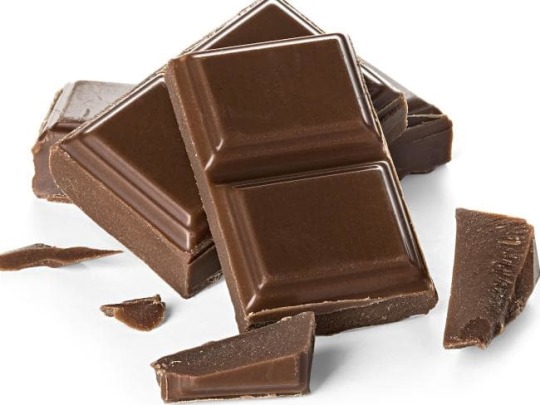
Chocolate, Theobromine and Caffeine:
Everybody’s heard that chocolate is bad for dogs, and it’s true. Chocolate contains a compound called Theobromine. Theobromine is a type of compound called a methylxanthine, and another methylxanthine you might be more familiar with is caffeine. We know quite a lot about these compounds, as humans use them both medicinally and recreationally. The long version is that they all inhibit phosphodiesterase and antagonise adenosine receptors. The short version is that they increase muscle activity, including the heart, and stimulate the central nervous system.
This presents as dogs that have fast and irregular heart rates, high body temperatures and increased muscle activity that can progress to seizures.
It takes a reasonable amount of chocolate to poison a dog. One M&M isn’t going to do it. For a 35kg dog it’s going to take at least 3500mg of theobromine, which is about 5kg of typical milk chocolate. But only 1.2kg of dark chocolate or 600g of cooking chocolate, which is possible.
A 10kg dog needs much less. 1.5kg of milk chocolate would do it, which is only about 3 large Easter Bunnies, or 300g of dark chocolate, which is one packet from the cooking isle.
Chocolate is super tasty, dogs will absolutely gorge themselves on all chocolate available, so it’s not too difficult to poison smaller dogs with it.
And even if you get the dog through the toxicity, the high fat content of chocolate can go on to cause other gastrointestinal problems.
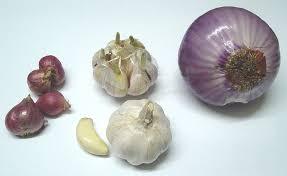
Onions & Garlic:
Yes, I said onions AND garlic. All allium species contain the same potentially toxic compounds, whether raw or cooked. That goes for spring onions too, it’s just really difficult to convince a dog to eat enough of them to be poisoned. These plants cause a Heinz body anaemia by inducing oxidative damage to the surface of the red blood cells, and for some reason breeds of Japanese origin like the Akita and Shiba Inu seem particularly prone to this toxicity.
It usually takes 10 to 15g per kg of body weight to poison a dog, but those breeds can be affected by as little as 5g per kilo. So for a big, 35kg dog, that’s about three medium sized onions.
Poisoning can happen all in one go, or it can happen by eating small amounts over a longer period of time, which is why it’s infuriating to see garlic being suggested as a natural remedy for things.
Bad cases will have to be treated with a blood transfusion as there is no direct antidote. And for interest, there are other things that can cause Heinz body anaemia too, like zinc.
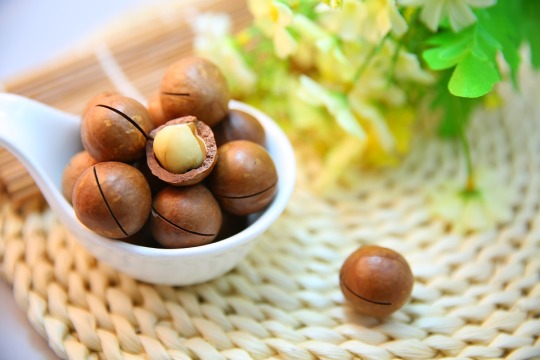
Macadamia nuts:
You know how everything in Australia has a reputation for being deadly? Well the Macadamia is the one native Australian plant that has successfully become a mainstream agricultural crop. And it’s poisonous to dogs. Legitimately, for some weird reason Macadamia nuts cause progressive paralysis in dogs. We don’t know what the active toxin is, but we do know it’s present in both raw and cooked nuts, and as little as 5 nuts can cause paralysis in a 20kg dog. Sometimes the dogs develop vomiting and joint swelling in addition to paralysis, but most recover well with supportive treatment.
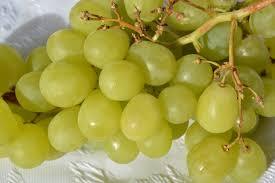
Grapes, Raisins and Sultanas:
This is another weird toxin when it comes to dogs, and it’s especially weird in that we don’t know what the toxic compound actually is. Grapes, raisins, sultanas and foods that contain them can cause idiosyncratic (unpredictable) reactions which result in kidney failure by ischaemic injury (lack of blood flow). It’s completely unpredictable which dogs will develop the reaction, and it’s independent of dose with as little at 10 grapes causing the toxicity.
In addition to being unpredictable, you really don’t want to mess around with it. Grape toxicity when it happens has approximately a 50% mortality rate.

Yeast dough:
A dog can absolutely eat cooked bread, but raw dough with yeast in it to make it rise presents some interesting problems. First is that the fermenting yeast produces ethanol, which can be toxic on its own. Second is that the yeast can and will continue to ferment inside the dog’s stomach where it’s nice and warm. This produces more ethanol, but can also cause bloating and the sticky dough is very difficult to remove by vomiting.
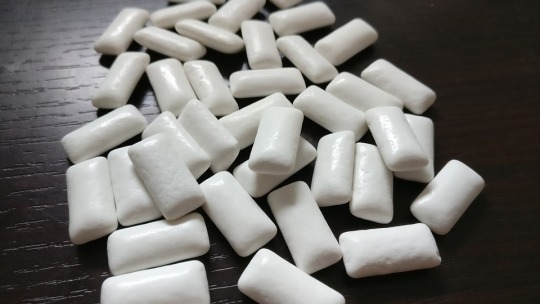
Chewing gum and Xylitol:
Xylitol is a sugar substitute used in many ‘sugar free’ products, of which chewing gum is the most common, but more and more foods contain it these days. It’s found naturally in many plants such as berries, but ingesting a large amount of it, about 75mg per kg, will cause profound hypoglycemia. Larger doses can also cause liver failure, and it’s only about 50:50 whether treated dogs will survive that. Dogs with hypoglycemia can look drunk with symptoms like vomiting and difficulty walking.
For a 35kg dog, 10 to 15 pieces of sugar free gum could cause this toxicity, and they will happily eat the entire packet if given the chance.
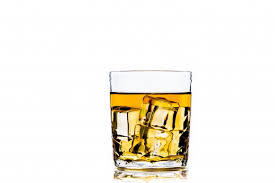
Alcohol (ethanol):
While humans indulge in this recreational plant toxin, we have spent a considerable amount of our history adapting to its use and some human populations have evolved a higher tolerance than others. Dogs have not done this, but they will consume it either in alcoholic beverages that humans give them for a laugh, or by consuming rotting fruit that’s fallen off trees. Yeast dough can contain it too.
Signs are more or less what you would expect for a drunk dog - sleepy and wobbly, but can progress to low body temperature, metabolic acidosis and some will stop breathing.
The median lethal dose of alcohol for a dog is about 1 standard drink for 2kg of body weight, orally. That’s an average, but some dogs will be more severely affected than others, and complications can still occur at lower doses.
And remember, wine is made from grapes, which can and will cause unpredictable kidney failure, so that’s an extra No.
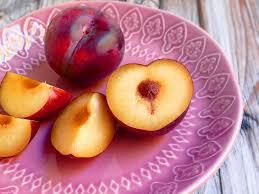
Stone Fruit:
The flesh of fruits like apricots, peaches and cherries are fine to feed in moderation, but it’s the large seed inside the fruit that causes most of the problems. These seeds do contain cyanide if cracked open, but the more common problem we see is not a toxicity, but gastrointestinal obstruction.
Some of these seeds are small enough to swallow, but large enough to cause a blockage either at the pylorus, where the stomach empties into the intestine, or in the small intestine itself. This will obviously vary with the size of the pip and the size of the dog. A cherry pit isn’t going to cause much drama, and a large dog like a labrador might poop out a series of peach pips, but a small dog like a terrier may not be so lucky.
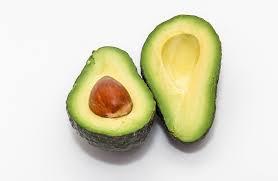
Avocado:
Avocados deserve a special mention because not only are they a stone fruit with a large stone that would cause an obstruction in most dogs if eaten, the flesh of the fruit also contains a toxin caused persin. Persin is very toxic to some species of birds and herbivores and will cause inflammation, swelling and cardiac arrhythmias. In dogs, it would be unlikely to see more than vomiting from this toxin. However, avocado is also relatively high in fat for a fruit, and fatty foods are also not ideal to feed most dogs and cats.
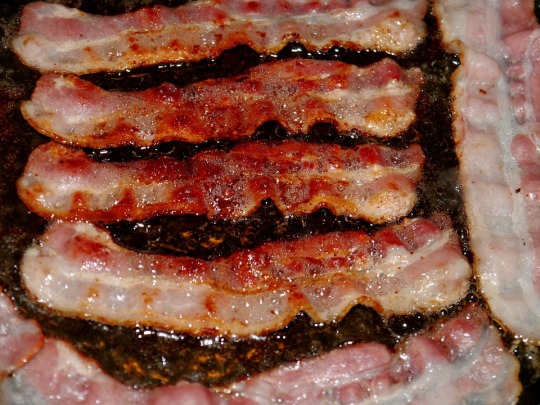
Fatty Foods:
The most common reason for me to see gastroenteritis in the vet clinic is a dog eating too much fatty food, but it will also potentially cause pancreatitis and that’s even more of a concern. We can tolerate dogs with some diarrhoea or a single vomit after eating something unusual - even humans do that sometimes - but pancreatitis will cause significant pain as well as nausea, and can progress to sepsis, disseminated intravascular coagulation, diabetes or death.
Dogs vary in terms of how much fat they can handle in their diet, with some being much more sensitive than others, and this sensitivity usually increases with age. For most dogs, moderation is the key, not gorging on fatty scraps that the humans didn’t want to eat or barbeque leftovers.
So now you know why these foods aren’t recommended for dogs. We’re not just saying it for no reason, even for the unexpected ones like grapes and macadamias.
This post was sponsored by Fluffy on Patreon. Thank you so much for your ongoing support.
2K notes
·
View notes
Text
@ghirahim made this post and I’m sharing because it is super important to know not just for cat lovers but dog lovers as well. It was in response to another post that was giving incorrect information on what will poison your cat.
alcohol: not very good for humans, either, but alcohol effects pets the same way it effects humans: targeting the brain and the liver. the issue? it takes way less to kill your 🐈 than it does a human. you weigh, on average, at least 💯 pounds (or 10x) more than your 🐈 does. 3 teaspoons of liquor could kill your 🐈. don’t do it. alcohol WILL poison your 🐈.
🍫: theobromine (and to a lesser degree, caffeine) is the issue with this one. humans? we can break this down in our bodies. cats, dogs, birds, ferrets? they can’t. it usually takes a pretty big amount of theobromine to cause a pet to actually die, though. it’s present in cocoa, so the higher % of cocoa in a 🍫, the less needs to be ingested to cause serious, life-threatening effects. baking 🍫 has a high concentration of theobromine and 1 square can kill a 🐈 or small 🐕. white 🍫 is a low risk, on the other ✋. 🍫 CAN poison your 🐈, especially DARK and BAKING 🍫.
caffeine: same story as alcohol: not that great for humans either, causes similar effects as in humans… just quicker and with less caffeine ingested. elevated heartrate, seizures, etc. can be seen. dogs and cats are more sensitive to the effects than humans are. caffeine WILL poison your 🐈.
dairy: cats are lactose intolerant and so their bodies cannot properly break it down– much like how we can break down theobromine and cats/dogs can’t. however, it’s not going to poison your 🐈, just give them diarrhea and other gastrointestinal upset. dairy WILL NOT poison your 🐈, but will cause gastrointestinal upset and diarrhea, so it is strongly recommended to not give dairy products to your pets.
fat trimmings: fat trimmings are just fat. if you feed fat to your cats, they will become fat and/or it will increase the level of lipids in the blood, leading to diseases and complications like chronic pancreatitis, which can be fatal. fat trimmings WILL NOT poison your 🐈, but will lead to disease that can be fatal, so it is strongly recommended to not feed fat trimmings to any pets.
raw meat: cats can eat raw meat. cats are obligate carnivores. cats are designed to only eat meat, and raw meat is not of serious risk to them. disease carried in raw meat? not a problem when you are a 🐈 who has evolved over millions of years to eat raw meat. i hate hearing “cats can’t eat raw meat!” from people with outdoor cats. you realise your cats are eating raw 🦎 and bird, right? raw meat has more nutrients than cooked meat (which we eat veggies & fruits to compensate for– cats can’t digest these) and, obviously, there are some diseases and bacteria that cats aren’t immune to but cats are less likely to eat rotten meat than dogs are, anyway. treat the meat like you treat human meat and it’s totally fine. cats are DESIGNED TO EAT AND DIGEST RAW MEAT! IT’S PERFECTLY FINE TO FEED YOUR 🐈 RAW MEAT, but make sure that the meat is in-date and properly stored/cared for. rotten or spoiled meat CAN lead to disease and poisoning, but the same goes for 90% of the animal population!
eggs: its 🆗 to feed your 🐈 eggs. im not even sure why this is a question. raw eggs rarely carry salmonella and even humans rarely contract salmonella from infected eggs. your average 🐈 will never contract salmonella from raw eggs, only in an immuno-compromised 🐈 would this ever be an issue. cats can safely eat raw and cooked eggs, as salmonella is pretty much only a concern in an immuno-compromised 🐈 in the first place.
🐟: 👀 raw meat above. 🐟, however, is a bit of an exception because of higher levels of mercury & low levels of taurine and differing balances of phosphate and calcium mean that it’s not a sustainable diet for cats and could lead to mercury poisoning or bone disease if it is the only protein given. when given ~1 time a week and with varied proteins there is no issue. again, cats are DESIGNED TO EAT AND DIGEST 🐟 AND OTHER MEATS! however, previous warnings about storing 🐟 correctly still applies, and proteins should be varied due to 🐟 having different levels of phosphorous, calcium, and taurine and mercury content. a primary diet of 🐟 CAN lead to bone disease or mercury poisoning in extreme cases.
🍇 and raisins: admittedly, this one is a bit of a wild card. some pets eat raisins/🍇 without an issue, but in others, these can cause renal failure and death rapidly. we still don’t know why. animals with prior kidney issues are more likely to be effected by 🍇/raisin toxicity, and cats are more likely to have kidney issues due to many cats not getting adequate moisture in their diet. 🍇 and raisins MAY lead to poisoning in some cats and dogs, especially those with pre-existing kidney conditions.
onions and garlic: yes! all members of the allium genus (shallots, scallions, leeks, etc. are included) contain thiosulphate which, when ingested by cats and dogs, can lead to a serious condition in the blood known as hemolytic anemia. basically: their red blood cells burst. this can be fatal and a small amount of onion/garlic/etc. is needed to cause clinically significant issues. onions, garlic, and other members of the allium genus CAN and WILL poison your pet in even small amounts.
tuna: 👀 🐟 above. canned tuna tends to be soaked in oil which leads to the same issues as fat trimmings in increasing lipid count in the blood. sashimi quality tuna will also have higher concentration of mercury and shouldn’t be consumed more than occasionally in the 🐈’s diet. canned tuna in oil is often too fatty and leads to the same issues as eating fat trimmings, however, tuna steak/sashimi/etc. quality tuna is the same as other 🐟: occasional inclusion in the diet is fine!
xylitol: relatively small quantities of this (an artificial sweetener) will cause a sudden drop in blood sugar in dogs, which can lead to comas, seizures, or death. many times, if they are not rushed to the 🏥 immediately, they will die, and even then, they may suffer permanent liver damage. however… cats are not adversely affected, and typically aren’t attracted to foods w/xylitol in it in the first place. xylitol is NOT likely to poison your 🐈, but small amounts can KILL your 🐕, moreso than 🍫!
3 notes
·
View notes
Text
What to NOT eat when you have RA (and what you should)
A tumblr mutual recently might have joined the venerated club of the future cripples and as each of us is a little unsure of what to do. SO I decided to grab my combined wisdom of 15 years on the sickbed and lecture a little about the one thing I really, really know A LOT about.
Prefix: I am not a doctor or nutritionist, I am just someone who has spent a lot of time in this arena and earned her battle scars.
So, first of: this is not a scientific discourse. This post is designed to help people with RA to clean up their diets and help them manage symptoms.
I will not throw around ALA, DHA, EPA, Linolic acid, Gamma-linolenic acid, Arachidonic acid, eicosanoids and so on. If you want to learn about all those, there you have it. Have fun. (or don’t mostly, it’ll just make your eyes bleed)
Here goes... a lot of text. enjoy.
What you DO need to know is that there are Omega-6 (n-6) fatty acids in the world and Omega-3 (n-3) fatty acids. The are pretty similar and use the same receptors in the body and block each other.
Normally you should strive to never exceed a 4:1 ratio of Omega-6 to Omega-3 fatty acids, lower is better if have RA. Strive for 1:1, but most people on a western diet hover somewhere around 16:1 ratio, sometimes up to 30:1, depending on what you eat.
(you know what, go, read this Wikipedia article: https://en.wikipedia.org/wiki/Omega-6_fatty_acid)
(note, not every Omega-6 fatty acids are made alike, some are good, but in this context they are rare.)
Now, what are these things and what they do.
This is a simplified explanation, please don’t stone me, nutritionist tumblr.
Imagine Omega-6 fatty acids like the ammunition of your immune system. The fault that makes your body attack itself lies somewhere else, but the ammunition comes from the n-6. That sounds pretty important in terms of disease fighting and it is. N-6 feed inflammation. Inflammation roasts infections. Sadly, it also roasts your joints.
Main culprit here is something called Arachidonic acid (AA). There is even a medication (Sulfasalazin) used to treat RA (And Morbus-Crohn, and colitis ulcerosa) that works solely over blocking parts of the AA metabolism.
You body produces certain amounts of AA from other n-6 acids but at some point it puts a cap on it. But you can always add more by ingesting more.
So, the more n-6 you eat, the more kindling you throw into the fire that burns your body down. Bad Idea!
Don’t do that.
What do instead, Fluffy?
Lowering your n-6 intake is not all, at the same time you need to raise your n-3 intake. Because n-3 blocks the receptors for n-6 (and the other way round) and thus lowers the inflammatory activity in your body.
Yay!
Do that!
But how?
And here is where it gets complicated because all our western diets seem to be geared toward eating more Omega-6 fatty acids.
There are lists of food you shouldn’t eat and you will find some things on there that you eat every day or several times a day and there are things on the good list, that you wouldn’t even know how to get. (Ok, granted, I live in southern Germany. Fatty Sea fish IS hard to come by and expensive.
But every little bit helps. You have a depot of Omega-6 fatty acids in your body and the less you eat, the less you have, the less ammunition your body has to destroy itself. Think of it like a gunpowder depot. Five pounds of gunpowder are bad, but they are much LESS bad than 50 pounds of gunpowder. (Omega-3 acids are your water supply in this equation. The game’s goal is to not blow up. ok?)
Here comes the BAD list. I will include the base ingredients, you’ll have to do the work, but if it contains a mix of any of the following, it’s bad (I kept the Salad dressing as an example. THe Same goes for Chips (fried), Fast food (Fried), Cakes and sweets (Butter, cream and eggs))
1. vegetable oil: Safflower, Sunflower, corn, wheat germ, soybean, walnut... Basically the whole lot of cheap vegetable oils. Many of the cheap oils make it worse by being heated. (there will be a good list, don’t worry), That includes margarine, btw.
2. Salad dressings and Mayonaise: aside from being super chemical, it usually contains: Veggie oil, dairy and eggs. Three of the worst offenders on this list. Learn to make your own.
3. Nuts and Seeds: They ARE pretty high but they also have the huge benefit of healthy oils to go with it and a lot of fiber. THat’s why they usually are pretty far down on the list. I add them for full disclosure.
4. Pork: Pigs are omnivores. They produce their own omega-6 fatty acids AND they ingest and store it. Pork is evil. Don’t eat pork. Avoid anything that comes from pork. (Lard, for example will blast you out of the safe zone fore WEEKS!)
5. Chicken: Woah! Suprise! Yeah, Chickens eat a lot of stuff that adds Omega-6 to their meat. Sorry guys.
6. Dairy: As a rule of thumb: Avoid any high-fat animal products: Butter, cream, high fat (and especially high processed) cheese. Skim milk is ok. Cheese under 40% fat in dry weight is ok. Low fat Greek yoghurt is ok, Low fat curd is ok. You get the gist.
7. Eggs: Sorry, guys. Or not sorry. Because half the egg seems to be ok. The evil Omega-6 guys hide in the yolk. So if you sneakily avoid the yellow stuffs and just slurp your egg whites for breakfast you should be fine. (My cats love that point. Spoiled beasts)
HOW TO OIL? HELP!? That was a long list of oils not to eat up there. Good news! All is not lost because Olive oil is pretty neutral in the oil department and flaxseed oil (if you can get it) is actually pretty good! Lots of Omega-3. Bad news: flaxseed oil is a) expensive and heats badly. Throw it on salad. Or stick to cold-pressed olive oil. (heating is bad)
-> Rule of thumb: if it from animals and high in fat eat rarely. If it’s grilled at high temperatures, yes that includes burgers: EAT RARELY.
Although gras fed beef is fine. Thanks for cows being such picky eaters. Turkey is fine as well, btw.
So, turkey and beef are ok. Yay! (in moderation)
But what about fish? Fish is said to be good, but it’s meat. (well, kinda)
Earlier, we were talking about the Omega-3 and Omega-6 ratio. This is important. So, if you eat a lot of Omega-3 it neutralizes some of the Omega-6. Which is where fish comes in. Yes, some of that stuff is high in Omega-6 BUT it’s also high in Omega-3 fatty acids. Especially, sea fish. Salmon, Cod, Tuna. Eat that.
Here comes the GOOD list:
1. Fish: (sea fish) Halibut, Mackerel, Salmon, Tuna, Cod. If you live somewhere were you have access to fish, by god, eat that shit! Fish oil btw. is disgusting but has a lot of Omega-3s (sorry)
2. Seeds and nuts: Chia, flax, hemp, walnut. Here we come back to the balance. Walnuts have a lot of Omega-6, too, but the ratio is the important part.
3. Veggies: Brussels sprouts, Kale, Spinach, Broccoli, Cauliflower. Haha, sorry guys! Eat your spinach.
4. Soybeans: edamame. Sorry, I don’t make that hipster shit up.
5. Supplements: EPA and DHA (they are disgusting but heck, with enough motivation you can swallow everything, even if it’s big, feels squishy and somewhat slimy at some point. Like fish oil capsules. No idea what you were thinking about.)
Now, thank fuck, Omega-3 fatty acids are a bit of in fashion right now. There are a lot of Omega-3 infused foods out there. Milk, yoghurt, eggs even.
That alleviates the situation somewhat and makes it easier to get to a healthier ratio. And eat fish.
Not sure if I mention: if you can afford it: EAT FISH:
And never, ever eat pork.. unless it’s worth it. THe pain, I mean. I’ve done it. It’s ok. Just be sure to look at food and say from the bottom of your heart: You are worth it!
Then eat it ;)
Good luck all of you and especially @mostlyhydratrash
If you have questions, come find me and don’t google evil pictures of deformed hands. Rather have a pic of mine:

9 notes
·
View notes